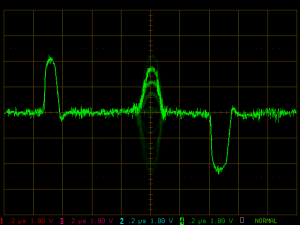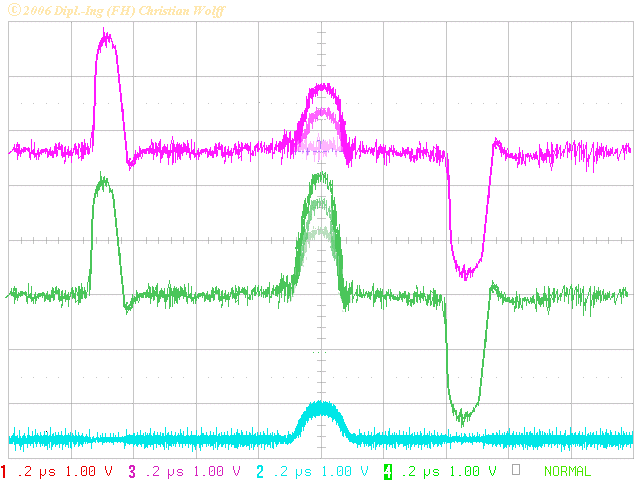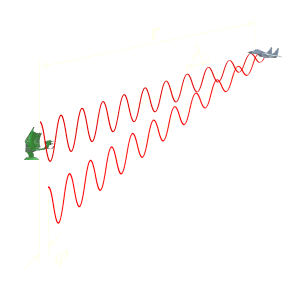Pulse-Pair Processing
To distinguish a moving target of a fixed object with help of the
Doppler frequency,
at least two periods of the deflection must be compared with each other.
Since the Doppler- frequency (few Hertz) is small relatively to the transmitted frequency (much Mega-Hertz),
therefore a phase comparison is more easily to carry out than a direct
frequency comparison technically.
The storage of a deflection is carried out in suitable memory media, in the past in special analogous
vacuum memory tubes, later also with a chain of condensers (distance: digital, signal: analogous)
and today only in digital memory cells.

Stage
Stage
signals
transmitted
power
Figure 1: functional block circuit diagram of a coherent-on-receive receiver

Stage
Stage
signals
transmitted
power
Figure 1: functional block circuit diagram of a coherent-on-receive receiver

Stage
Stage
signals
transmitted
power
Figure 1: functional block circuit diagram of a coherent-on-receive receiver (interactive picture)

Figure 2: The phase shifting of the received signal
Well, a fixed target suppression happens by the phase comparison of the echoes received by several
pulse periods (pulse- pair processing). If the phase relationship is always equal, then there isn't
any phase difference and the target will be suppressed. If the target has moved, the phase difference
is unequally zero and the target will be shown on the screen.
To get the necessary frequency-reference for the phase-detector, a high correct
coherent oscillator
(called: “Coho”) is synchronized with the down converted on the IF- frequency transmitting pulse.

Figure 3: Oscillogram of an output signal of a phase-detector
The echo signal of a moving target at the output of the phase-detector changes it's value and also the polarity in every pulse period. A fixed clutter signal will keep it's value and polarity in every pulse period.
A pulse period is stored in a memory. This memory stage has got a memorycell for each rangecell and delays the whole scan for one pulse period (PRT). Both periods, the actually period and its predator, are led to an extractor. The output of this stage is the difference of both input-signals. Clutter with a constant amplitude will be eleminated. Moving targets pass this stage. On this way the moving target produce an output signal and the fixed clutter don't do this. (see the tooltip on test point TP2 in Figure 1!)
Description of the modules in the block diagram

Figure 3: Echoe signals of fixed clutter have got the same amplitude pulse to pulse and can be cancelled:
magenta: output of the phase-detector (aktually period)
green: output of the memory (delayed period)
blue: cancelled video

